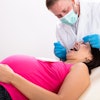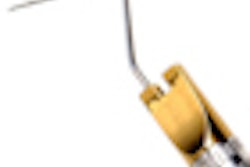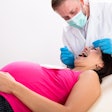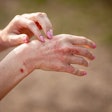Patients with elastomeric (traditional "rubber band" style) orthodontic brackets have similar levels of bacteria as patients wearing self-ligating (gated) orthodontic brackets when examined after one year, researchers at the Oregon Health & Science University (OHSU) School of Dentistry have found (Orthodontics: The Art and Practice of Dentofacial Enhancement, Summer 2011, Vol. 12:2).
This is in contrast to an OHSU pilot study one year ago that determined elastomeric orthodontic bracket patients had significantly higher plaque retention than self-ligating orthodontic bracket wearers after examination at one week and five weeks. The researchers also found in the new study that patients wearing self-ligating orthodontic brackets and elastomeric orthodontic brackets had similar numbers of white-spot lesions.
Numerous studies have shown an increase in caries-causing bacteria in young people with fixed orthodontic appliances, according to the researchers. Because of the increased difficulty in cleaning teeth once orthodontic appliances are placed, there is an increase in plaque accumulation and the development of undesirable white-spot lesions.
The goal of the OHSU study was to further examine the use of adenosine triphosphate (ATP)-driven bioluminescence to accurately quantify bacteria that cause plaque; compare plaque amounts between wearers of self-ligating orthodontic brackets and elastomeric orthodontic brackets one year postbonding; and analyze the formation of white-spot lesions by digital photography and laser light fluorescence.
Thirteen OHSU orthodontics patients age 12 or older who were in the original braces study one year ago were re-examined for this study. None had white-spot lesions when the brackets were fitted, and oral hygiene instructions were presented to all patients.
The OHSU team found that ATP-driven bioluminescence continues to be highly predictive of numbers of total plaque and total oral bacteria in orthodontic patients. While the numbers of bacteria in patients were higher at one year postbonding than at five weeks, there was no significant difference in the numbers of total plaque bacteria surrounding the two different bracket types after one year of orthodontic treatment, they noted. Based on photographic and laser determinations, white-spot lesions were found at nearly equal frequency on teeth bonded with either bracket type.
"The disappearance of differences in total plaque bacteria surrounding the two bracket types after one year of orthodontic treatment may be due to decreases in patient compliance with oral hygiene practices," noted Curt Machida, PhD, principal investigator and OHSU professor of integrative biosciences and pediatric dentistry, in a press release. "It is generally recognized that through the course of treatment, orthodontic patients often become less compliant with the use of oral hygiene practices. It is not known if the lack of differences can be generalized to all types of self-ligating brackets, or if design differences among self-ligating brackets could result in variations in plaque formation."



















